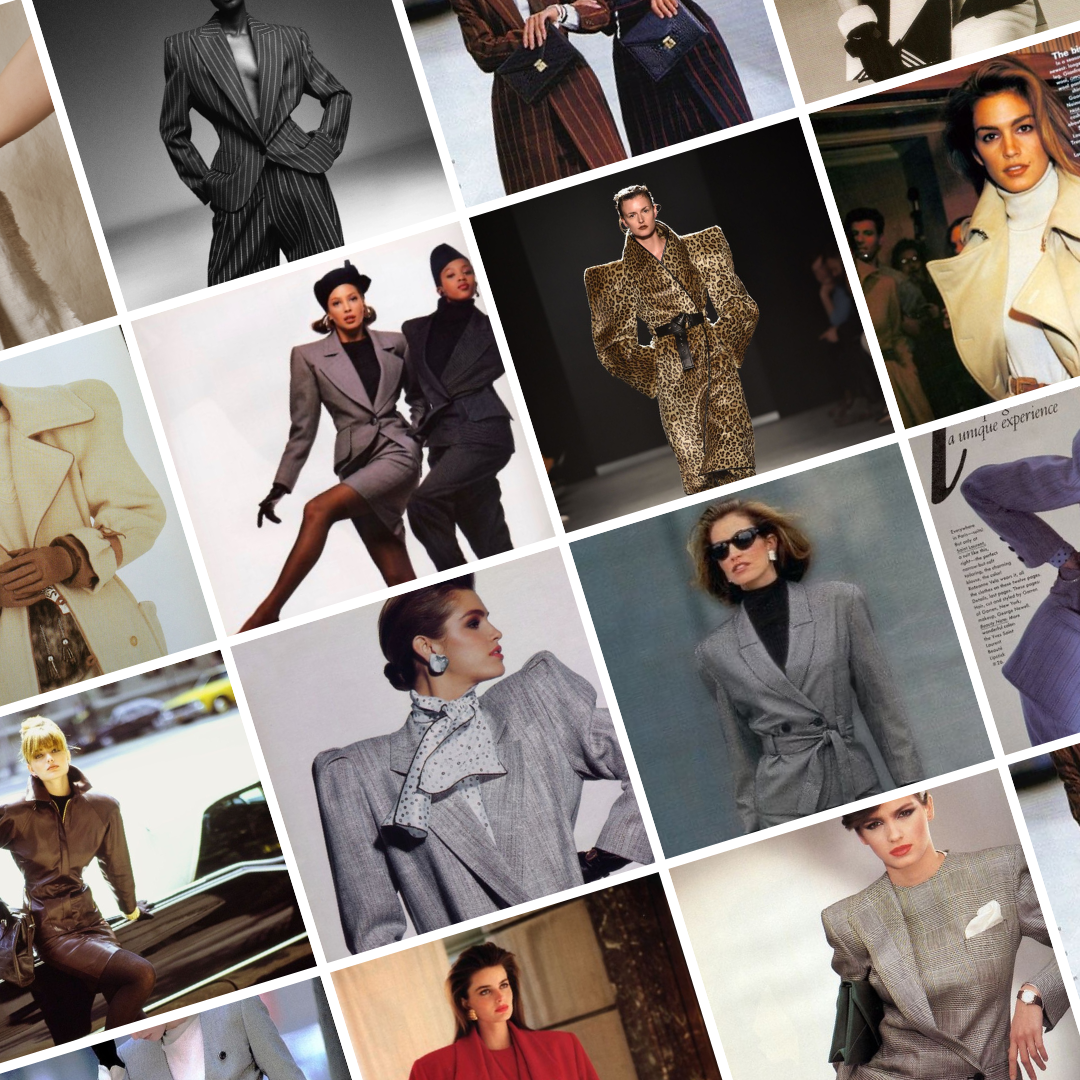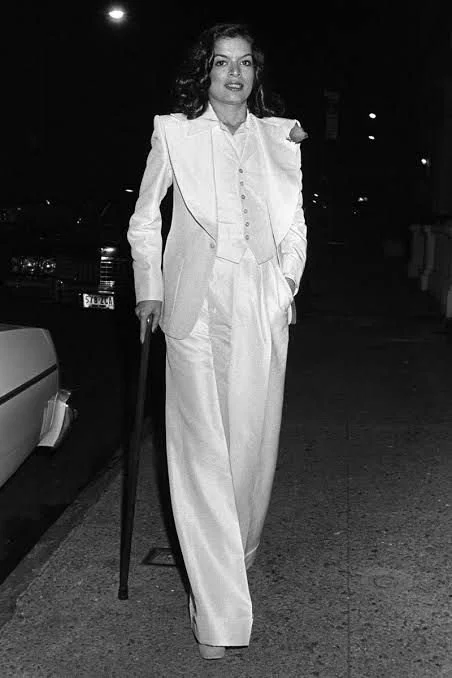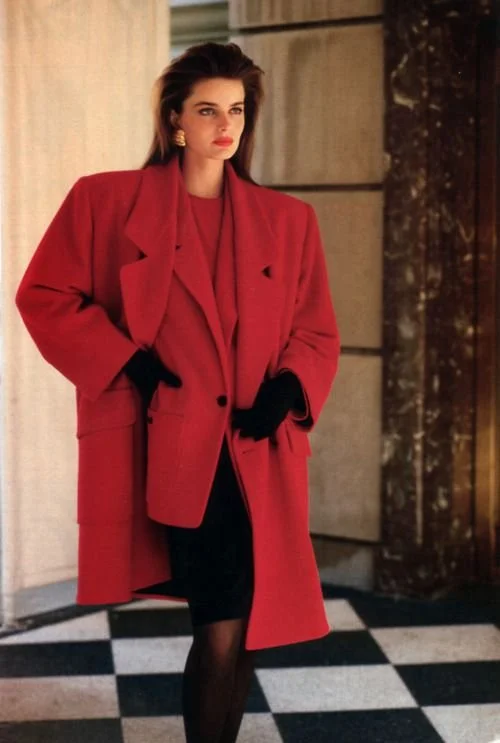The history of power dressing
Image Credit: The Style Historian
One topic frequenting fashion circles are conversations on power dressing and its resurgence.
Expected to reign supreme in 2024, but with a softer twist on its origins – trend forecasters predict tailored elegance, with a more relaxed aura.
Think outfits that can seamlessly take you from the office to the bar.
But before we can get into the modern-day soft girl power dressing, we need to unpack the origins – what inspired power dressing and what does this mean today?
Friends, let’s dig in.
The origins
Coco Chanel is credited with the earliest iterations of power dressing in 1925, with tweed suits known for combining a tight skirt and a collarless button up jacket, typically with a braid trim, metallic buttons and fitted sleeves.
It is believed Chanel deliberately designed the first suit for women to adapt to a changing lifestyle among women, brought upon by World War I which saw women entering more male-dominated spaces.
Image Credit: 1950s Chanel suit, Pinterest
The first suit for women, it had traditionally masculine elements – including the colour, the tweed material was commonly used in men’s sportswear and the structure of the jacket itself.
Chanel’s suits helped give women a more authoritarian appearance while remaining elegant – allowing them to complete importance work while being also comfortable.
A man’s tuxedo
While glamour and excess started to infiltrate back into a post-war society, updates to the power suit continued, with YSL creating the first power suit for women with trousers in 1966.
It was a man’s tuxedo suit that was redesigned to fit a women’s body, and reiterated the concept of women breaking gender roles through their clothing.
Called ‘Le Smoking’, it was originally not well received by the haute couture community. Nevertheless, YSL included them in his collections until 2002.
“For a woman, the tuxedo is an indispensable garment in which she will always feel in style, for it is a stylish garment and a not a fashionable garment. Fashions fade, style is eternal.” - Yves Saint Laurent
Image Credit: Bianca Jagger’s YSL’s Le Smoking wedding suit, Pinterest
The working girls
With women entering the workforce at a larger rate in 1970s, we finally started to see further revisions as women became fully immersed within men’s spaces.
Enter the power dressing of the 1980s – blending fashion with professionalism while exuding confidence and authority.
It was seen as pivotal to helping women shatter glass ceilings and served as a way to curate their image to be aligned to executive roles – becoming a uniform for success.
Armani is credited with being the pioneer of the power suit – its key elements included statement accessories, padded shoulders, large lapels, oversized tailoring, thick fabrics and bold colours.
Image Credit: Pinterest
Near the end of the 1980s, tailoring began to get softer, and we saw this continue through the 2000s with corporate looks becoming slimmer and slimmer, and skirts being replaced by trousers.
In late 2022 we saw nods to power dressing returning, with Hailey Bieber starting to wear oversized blazers – a return to corporate core after the 2020 pandemic had us at home and OOO.
Soft girl power dressing
Coming out of the big four fashion weeks last month, we’re seeing a lot of murmurs online about how we can expect to see much more power dressing throughout 2024.
Called soft girl power dressing, with tailored looks and a more relaxed vibe than its origins.
Think pairing bows with a traditional suit, or ditching a coordinated set for blazers and flowy trousers that give sophistication while ensuring comfort is king.
And it’s no surprise that this is happening at the same time as the return of ‘80s excess – with oversized bags, even bigger blazers and jewelry stepping out into the scene.
No matter what you choose to do – bringing soft girl power dressing or c-suite chic back into your wardrobe, I think the history of power dressing speaks to a powerful quote from a Guardian interview with Maria Grazia Chiuri.
The first female creative director at Dior in its 75-year history once said:
“We must never forget that fashion speaks about society’s relationship with women’s bodies, more than with men’s bodies.”
Until next time,
- TSH xx
—
The Style Historian is a lifelong thrifter and style enthusiast passionate about the stories behind the fashion, trends and styles we see today. She covers these histories on her weekly blog, The Style Historian, and on her Instagram @thestylehistorian_. In 2022, she founded her online vintage shop, Good Find Studio, in an effort to minimize her closet and live more sustainably. When not researching, she can be found watching a good doc or anything on Bravo, thrifting and spending time outdoors.
Sources: Glamour, Onmanorama, Wikipedia: Power Dressing, Wordnerd, Nssgclub, MyHandbook, Byrdie, The Guardian, Per-spex.com, Hello Magazine, Museelys Paris



